It’s hard to find someone who doesn’t know what the iPhone is. It was with the launch of this product on the market a new stage in the development of mobile phones and Internet marketing in general, and today we propose to consider the stages of the evolution of the iPhone from 1 to 6 from the moment it appears on the market.
iPhone 1 (first generation)
iPhone 1 (first generation)
the first-generation iPhone was unveiled at MacWorld on January 9, 2007. The main advantages of iPhone 1: revolutionary user interface, a special operating system, a display that supports the Multi-Touch option (the ability to control the system with more than one touch of the finger on the screen), automatic synchronization via iTunes.

The iOS operating system, designed specifically for the iPhone, has been functionally truncated for marketing reasons. For example, the ability to install third-party programs was limited, as well as multitasking. Nevertheless, the successful design and competent promotion policy allowed Apple to instantly conquer a considerable part of the mobile device market.
Specifications iPhone 1:
- 4, 8, 16 GB of physical memory;
- battery life in the network - 8 hours, with Wi-Fi - 6, time for listening to music and watching videos - 24 and 7 hours, respectively;
- dimensions: 115 × 62 × 12 mm .;
- device weight - 135 grams;
- 128 Mb random access memory;
- processor with a frequency of 620 MHz (software underestimated to 412 MHz);
- screen size - 3, 5 inches, resolution - 480 × 320 pixels;
- Bluetooth 2.0, Wi-Fi 802.11 b / g;
- camera - 2.0 megapixels with a resolution of 1,600 × 1,200 pixels.
The new smartphone was positioned as a combination of three devices: “widescreen iPod with touch controls”, “revolutionary mobile phone"And" advanced Internet communicator. " However, it also had a number of drawbacks, and the most significant of them was the lack of 3G network support, so I had to use the rather slow EDGE technology to access the Internet. In terms of security, the iPhone was inferior to the BlackBerry communicators and therefore was not widely used in the corporate segment. The first iPhone did not officially support the MMS short multimedia messaging service due to its low popularity, but soon an MMS transmission application appeared that could be unofficially installed on the iPhone.
The second step in the evolution of Apple smartphones is the iPhone 3G, the next model in the line of phones from the company, presented in June 2008 at the WWDC (Worldwide Developers Conference) in San Francisco.
The first difference is, of course, the design: Apple abandoned the aluminum back cover in favor of plastic, the buttons are made of plastic and metal, the edges of the phone are rounded to make it easier to hold in your hand. The main innovation was support for 3G (which the name of the model speaks of), which significantly accelerated page loading. Moreover, 3G on the iPhone was much faster than on competitors' smartphones. Also, the iPhone equipped with a GPS-receiver, which in conjunction with fast internet made it a great navigation device. Unlike its predecessor, the new Apple phone model was now distributed in 70 countries instead of 6 at lower prices (version with 8 GB of internal memory - $ 199; version with 16 GB of internal memory - $ 299).
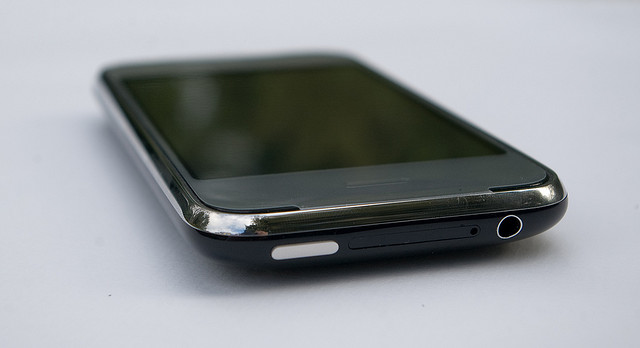
IOS 2.0 was significantly better protected from Jailbreak (jailbreak, an operation not officially supported by Apple that allows access to file system and device OS), and also supported services App store, Microsoft Exchange ActiveSync, MobileMe, and push email. Major updates operating system issued annually, and latest versionsupported by iPhone 3G iOS 4.2 was developed on November 22, 2010.
Most of the hardware was based on the hardware of the original iPhone (processor with a frequency of 620 MHz, 128 MB of RAM).
The third sensational phone on the list, the iPhone 3GS, was introduced in San Francisco in 2009. Outwardly no different from its predecessor, new iPhone became the fastest Apple device at that time, as evidenced by the prefix "S" - speed (speed) - in the name of the model.
The third-generation iPhone had a built-in 3-megapixel camera with autofocus, automatic white balance and the ability to shoot VGA video. The device’s LCD display was developed by Apple, but was manufactured by LG. The density of the display elements was 163 ppi with a screen diagonal of 3.5 inches, the display resolution was 480x320 pixels. Unlike its predecessor, the screen of this model could transmit more saturated colors.
Using a processor with a frequency of 833 MHz (software underestimated to 600 MHz) and 256 MB of RAM allowed to increase the productivity of working with the phone. The iPhone 3GS battery can last up to 10 hours when watching videos, 30 hours when listening to music, 9 hours when viewing web pages via Wi-Fi, 12 hours of talk time on 2G networks, 5 hours on 3G networks and 300 hours of standby time .
A voice control feature has also been developed that allows you to dial telephone number only with the help of voice, and a digital compass, which allowed you to go to GoogleMaps and track your own position. Despite all the changes, the price of the phone remained affordable: an iPhone 3GS with 16 GB of internal memory cost $ 199, and a phone with 32 GB of internal memory cost $ 299.
The next step in the evolution of the iPhone, the line of Apple devices, was the iPhone 4, presented June 7, 2010 at WWDC in San Francisco. The launch of the iPhone 4 is considered the biggest leap in comparison with the first iPhone. The fourth-generation iPhone developers, according to Steve Jobs, have surpassed themselves by improving the new model both inside and out.
The front and rear panels were made of aluminosilicate glass, and the side panels were made of stainless steel. A Retina Displey LED backlit LCD was developed with the following characteristics: 3.5 inches, 960x640 pixels (4 times larger than the iPhone 3GS), 326 dpi, 800: 1 contrast ratio.
Also, a 3-axis gyroscope connected to an accelerometer and a compass was integrated in each iPhone 4 model for 6-axis positioning. But the main feature of the new model of Apple smartphones is the ability to make video calls (FaceTime application).

iPhone 4 has an Apple A4 processor and 512 MB eDRAM - twice as much as iPhone 3GS and 4 times more than iPhone 1. Built-in 5-megapixel iSight camera with LED flash allows you to take high-quality photos and shoot videos with a frequency of up to 30 frames / s with recording audio tracks. The number of supported audio and video formats was also significantly increased and a video output function with a scan frequency of 720p was built-in.
The next model of the Apple phone line, the iPhone 4S, introduced in 2011, is an improved version of the iPhone 4 - the best-selling smartphone in the world.
Externally, the model is no different from its predecessor, but its hardware and software have become noticeably better. iPhone 4S is equipped with a dual-core A5 processor, which provides a graphics performance increase of more than 7 times and increases the operating system performance by 2 times. In addition, the new iPhone 4S has an 8-megapixel camera that allows you to take photos with a resolution of 3264x2448 pixels.
The most unexpected new feature introduced in the new model was the Siri option, which is something like a personal voice assistant or assistant. Siri is able to perform almost all the actions performed on the phone by a person: send messages, write reminders, search and launch programs, play media, etc.

iPhone 4S is Apple's first smartphone to work in GSM and CDMA - two major global standards cellular communications. On iPhone 4S, a new version of the iOS 5 operating system is installed, containing more than 200 improvements. The main ones: iMessage instant messenger, Newsstand magazine kiosk, iCloud service (« cloud storage data ”), integration with Twitter, etc.
iPhone 5 came out 5 years after the launch of Apple's first phone. It is made exclusively of glass and aluminum, its thickness is only 7.6 mm (that is, it is 18% thinner than the previous iPhone), and its weight is 112 grams (20% lighter than the previous one). A wide-screen 4-inch Retina display with Multi-Touch support and a resolution of 1138 x 640 pixels allows you to fit more working applications on each page. All software has been optimized to work on a new screen.
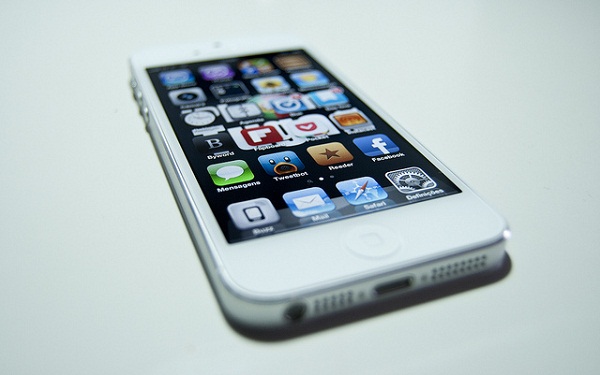
iPhone 5 comes preloaded with iOS 6, which contains completely new applications (Maps, integration with Facebook, Passbook and others), as well as advanced old ones (Siri, FaceTime, iTunes, Safari, etc.). The new model uses a dual-core processor manufactured by Apple A6, the amount of RAM - 1 GB, which increases the performance of the iPhone almost twice. Despite the increased screen resolution and increased productivity, the iPhone 5 holds the battery no worse than the previous iPhone.
iPhone 5, like the previous model, is equipped with two cameras, and the front one, designed for video communication, can now transmit video with a resolution of 720p, and photo quality has improved by 25%.
And finally, in September 2014, two Apple smartphones were released at once: iPhone 6 and iPhone 6 Plus.
The diagonal of the screen has grown significantly compared to the previous iPhone: now it is 4.8 inches, and the resolution is 1920 x 1080 pixels. The screen of the iPhone 6 Plus tablet is almost 2 cm larger than that of the iPhone 5. iPhone 6 is 0.7 cm thinner than the previous model: its thickness is 0.69 mm and it weighs 129 g.
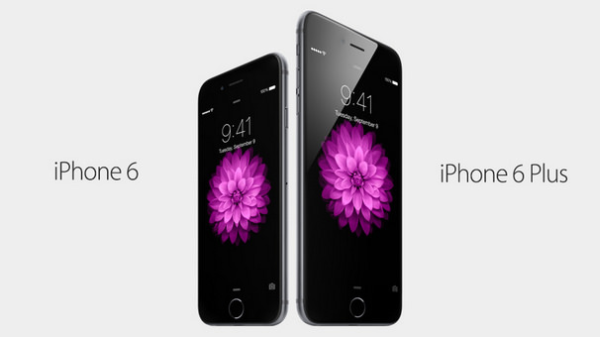
The iPhone 6 has an Apple A8 quad-core processor and an Apple M8 coprocessor, and it runs 25% faster than the previous model. One of the most coveted improvements is, of course, a more powerful battery: the latest model’s iPhone lasts 50% longer. The phablet can work 24 hours in talk mode - that's what the evolution of the iPhone has come to. You can now take photos with improved autofocus and a face detector, and the video shooting speed has increased to 60 frames per second - twice as much as the iPhone 5S. And that's not all: the new smartphone model boasts continuous autofocus and a professional image stabilizer. Good news for selfie lovers: thanks to the new “Burst” mode, which appeared at the front camera, they can take up to 30 pictures in a row.
IPhone 6 users will have access to Apple Pay, and the NFC chip allows you to use a smartphone instead credit card. Another nice addition is the barometer with many functions, which include measuring the ambient temperature.
This is the evolution of Apple smartphones - iPhones from the first to the last.
Need mobile landing for segmented ad campaigns?
Your high conversions!
Generations and varieties of iPhone
Since the summer of 2007, when the first generation of the iPhone was released, many models and varieties of the Apple smartphone have accumulated:
- iPhone 2G (Aluminum)
- iPhone 3GS in two varieties - with old and new bootrom
- iPhone 4 in three varieties - regular model, CDMA model and 2012 model
- iPhone 5 in two varieties - a model for America and the "global model"
- iPhone 6 and iPhone 6 Plus
- iPhone 6s and iPhone 6s Plus
- iPhone 7 and iPhone 7 Plus
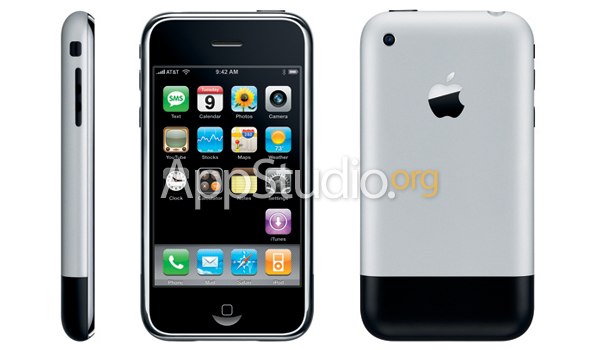
The very first, aluminum iPhone, unlike other generations. A characteristic difference is a large black plastic insert under the antenna in the lower part of the rear wall of the housing. Although the name has been assigned to this generation, it does not mean the generation of the iPhone itself, but the generation of the cellular networks in which it operates. The first iPhone only supported second-generation networks (including GPRS and EDGE).
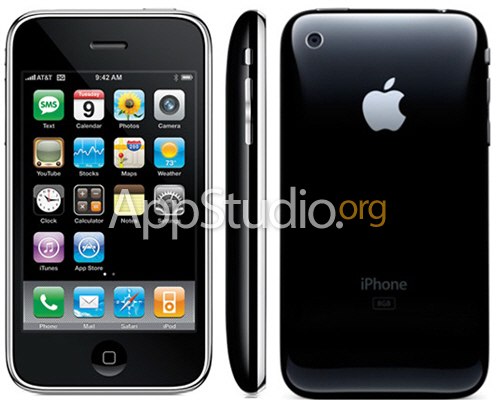
It has a fully plastic case in white or black. All inscriptions on the back wall are made in gray paint. iPhone was named so due to the fact that it was implemented support for 3G cellular networks.
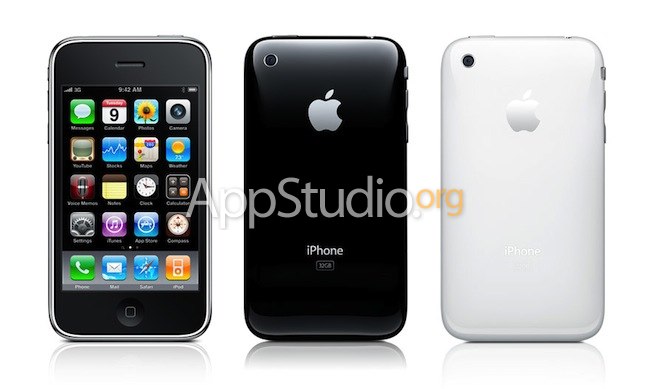
Outwardly, it almost completely repeats the look of the iPhone 3G, the only difference is that the inscriptions on the back wall are painted with exactly the same silver mirror paint as the Apple logo.
Old and new iPhone 3GS bootroms
From the point of view of jailbreak prospects, there are two types - with an old bootrom and with a new bootrom. Butrom (bootrom) is a non-rewritable hardware bootloader of the device, and the prospects of jailbreak largely depend on the presence of vulnerabilities in it. The difference between the old and the new bootrom is still evident: for iPhone 3GS with old bootrom guaranteed untethered jailbreak on any version of iOS, and for iPhone 3GS with a new bootrom - only tethered (read about the difference between tethered and untethered jailbreak).
It’s easy to distinguish iPhone 3GS with the new bootrom by serial number. It is necessary to take the third, fourth and fifth of its numbers. The third digit encrypts the year of production (9 \u003d 2009th, 0 \u003d 2010th, 1 \u003d 2011th), the fourth and fifth - the serial number of the week of the year on which the iPhone was released (from 01 to 52). The first iPhone 3GS with a new bootrom began to appear in the 40th week of 2009, and from the 45th week the new bootrom began to be used in all released iPhone. Thus, if the third digit of the iPhone 3GS serial number is 0 or 1, it definitely has a new bootrom. If the third digit is 9, you need to look at the fourth and fifth digits. If they are less than or equal to 39, butrom is exactly old, if greater than or equal to 45, butrom is exactly new.
You can find out the serial number of iPhone 3GS without turning on the device, because the serial is printed on the SIM card tray. However, this is not a very reliable method, especially when buying, because the tray is easy to replace. You can find out the serial number either in iTunes (on home page device properties), or on the device itself, in the menu "Settings-General-About this device-Serial number".
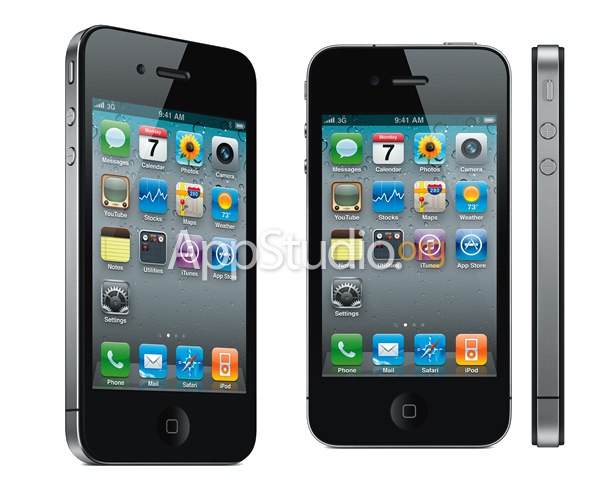
Significantly different from all previous iPhones, firstly, by design, and secondly by display. Both the front and back panels are made entirely of glass, and around the perimeter of the smartphone is surrounded by a metal rim-antenna.
There are three iPhone 4 models:
- ordinary GSM modelthat looks exactly like the photo above
- CDMA Model iPhone 4 differs in the absence of a SIM tray and another antenna design - it does not have a black bar to the right of the headphone jack.
- second revision of iPhone 4The launch of which began in 2012 looks no different from ordinary iPhone 4 GSM, but its processor has much less vulnerabilities for jailbreak. You can distinguish this iPhone model only with the help of third-party utilities, for example, redsn0w. Connect the gadget to the computer, download redsn0w for OS X or for Windows, run the utility. Go to the Extras-Even more-Identify menu, in the window that opens, scroll down and see the value in the ProductType line. If there "iPhone3,1" is a regular GSM-iPhone 4, if "iPhone3,2" is a new revision of iPhone 4 GSM; and the CDMA model is designated "iPhone3.3".


It looks almost the same as the iPhone 4 GSM, but its antenna design is the same as that of the iPhone 4 CDMA, while the iPhone 4S is always equipped with a SIM tray.
However, the most reliable way to distinguish iPhone 4S is the model code on the back. If the second line beneath the word iPhone says “Model A1387,” this is exactly the iPhone 4S.
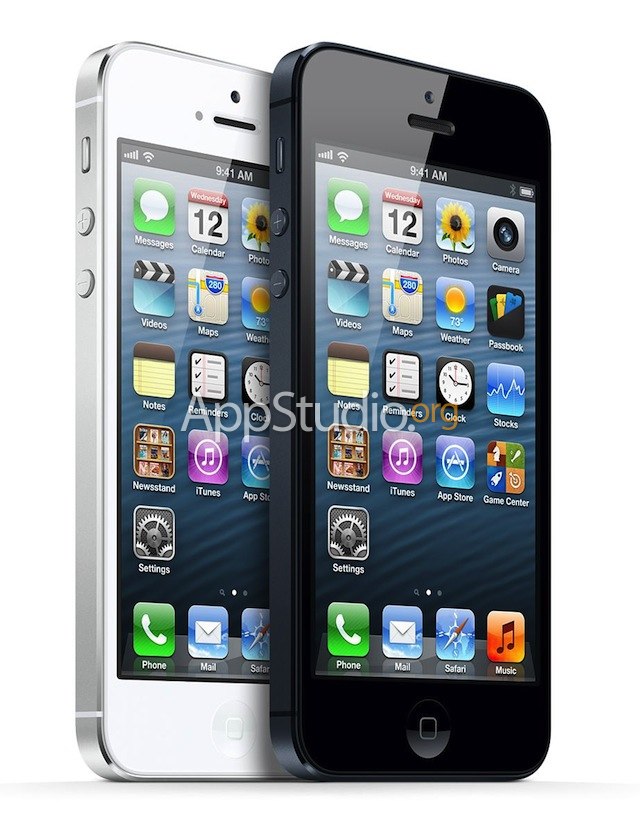
It differs from all other generations of the iPhone in height - with the same screen width, its diagonal has grown to 4 inches. The back panel of the iPhone 5 is made of aluminum, and glass inserts covering the antennas are placed on top and bottom.
Initially, iPhone 5 was released in two varieties - the "model for America" \u200b\u200band the "global model." The difference between them is in the list of supported LTE ranges, but for Russia it practically does not matter, because none of these models can work on Russian frequencies allocated for 4G.
You can distinguish iPhone 5 models by the model code on the back wall. "Model A1428" produces the "American model", and model A1429 - the "global".
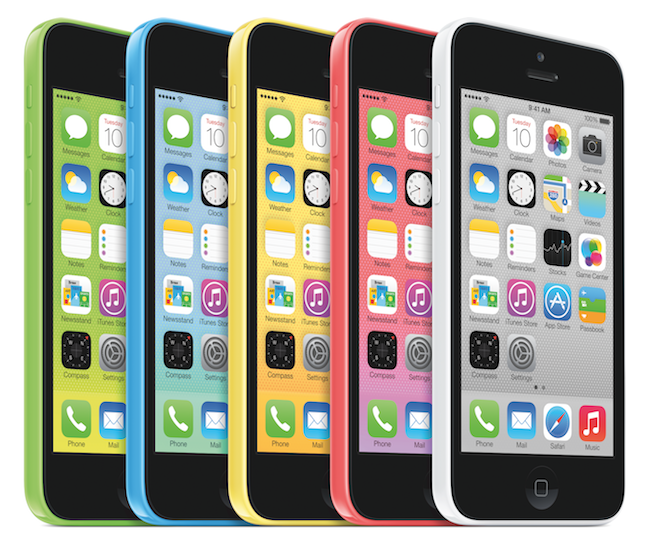
The first iPhone released in a multi-colored plastic case. Available in blue, green, pink, yellow and white models.
iPhone 5c was available in 6 hardware models - A1532 (for North America and China), A1456 (CDMA model for the USA and Japan), A1507 (worldwide model), A1529 (for Southeast Asia), A1516 and A1526 (for China) which differ in the composition of the supported LTE bands.
![]()
The first iPhone with a Touch ID scanner. A fingerprint scanner is built into the Home button, which has lost an icon but got a metal rim. Other external differences between the iPhone 5s and the iPhone 5 are a double flash and a reduced gap around the Power button and volume control buttons.
iPhone 5s was available in 6 hardware models - A1533 (for North America and China), A1453 (CDMA model for North America and Japan), A1457 (global model), A1518 and A1528 (for China) and A1530 (for Southeast Asia ), which differ in the composition of the supported LTE bands.
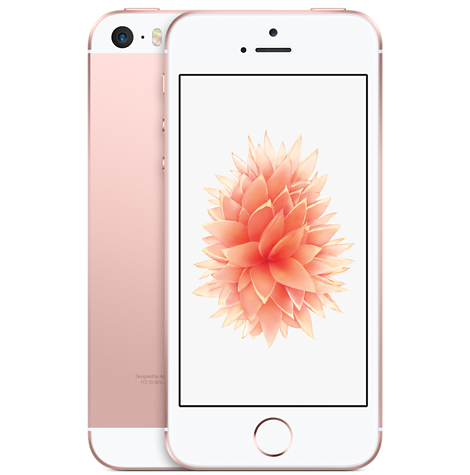
An unusual version of the iPhone, as evidenced by its name. It has no numbers, and the letters SE mean Special Edition. Externally, the smartphone differs little from the iPhone 5s, but its hardware filling corresponds to the iPhone 6s. As for performance, here the smaller iPhone even leads, ahead of the top Apple flagships of 2015. There are practically no external differences between the iPhone 5s and SE: SE is available in rose gold, but 5s is not; in addition, an additional marking is applied on the back of the iPhone SE - a square with rounded corners and the inscription "SE" inside.
iPhone SE is released in 3 hardware models - A1662 (for America), A1724 (for China) and A1723 (for the rest of the world). It is important to note that the American model A1662 does not support the popular LTE-band 7 in Russia.
In 2017, the iPhone SE line was redesigned, instead of models with 16 and 64 GB of memory, models with 32 and 128 GB began to be produced.

It was marked not only by a change in design, but also by another increase in the diagonal of the screen. Externally, the iPhone 6 is similar to the very first generation of the iPhone - a lot of metal, rounded corners. But the similarities end there: the iPhone 6 is much thinner, differs in the shape and position of the buttons. So, the Power button moved from the upper end to the right side of the smartphone. Another characteristic (and not the most pleasant) difference between the iPhone 6 and previous generations of the iPhone is a camera protruding from the body. The iPhone 6 has only one hardware model, universal for all regions. iPhone 6 comes in three hardware models - A1549 (for the Americas), A1589 (for China) and A1586 (for the rest of the world).
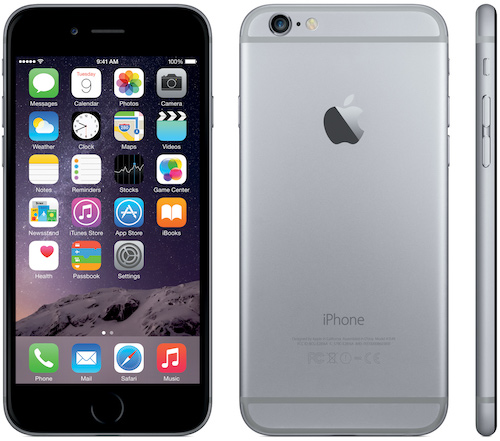
The only thing that looks different from the iPhone 6 is size. But this is quite enough, because the difference between the diagonals of 5.5 and 4.7 inches will be noticed by anyone. It is actually the largest iPhone in history. Like the iPhone 6, the iPhone 6 Plus has three different hardware models targeting different regions of the world: A1522 for America, A1593 for China and A1524 for most other countries.
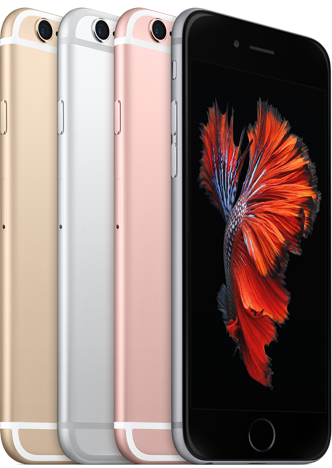
iPhone 6s cannot be visually distinguished from iPhone 6, they are completely identical. However, the iPhone 6s is the first in the history of the iPhone, which is also available in the new “pink gold” color. Other features of the iPhone 6s include a 3D Touch display that recognizes the force of pressing, and a 12-megapixel camera. But the turned off iPhone 6s can definitely be calculated only after inspecting the back cover. There, under the iPhone, you will see the capital letter S in a square with rounded corners. Below, the model hardware code will be engraved in small print - A1633 (model for the USA), A1700 (for China), A1691 (for Southeast Asia) or A1688 (for the rest of the world).
![]()
With regard to the iPhone 6s Plus, everything that is written above about the iPhone 6s is true. The 6s Plus also cannot be distinguished from the 6 Plus without looking at the back cover and making sure the letter “S” is there. Like the iPhone 6s, the iPhone 6s Plus comes in four hardware models - A1634 (model for the USA), A1699 (for China), A1690 (for Southeast Asia) or A1687 (for the rest of the world).
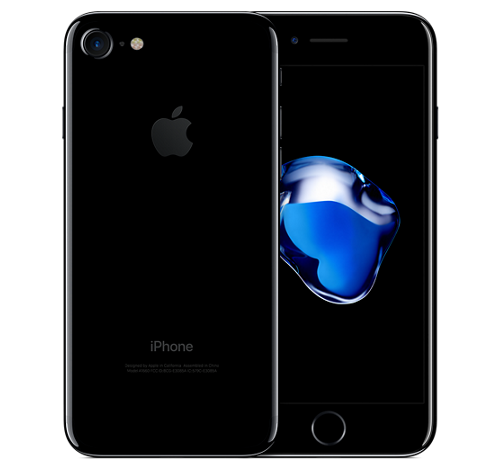
In 2016, Apple's long-standing rule that a new number in the iPhone model number always meant a redesign of the case was violated. Of course, the iPhone 7 can be distinguished from its predecessors, but only if you look closely. Firstly, the new generation iPhone does not have a 3.5mm headphone jack. Secondly, the camera is now not so much sticking out of the case, the protrusion was smoothed. Thirdly, the design of the antennas on the case is simplified - the transverse straight stripes are removed, only the stripes that envelope the upper and lower edges of the iPhone around the perimeter are left. iPhone 7 is no longer available in the color "space gray", it was replaced by two shades of black - matte and glossy (marketing name is "black onyx"). The iPhone 7 has one of 4 numbers of hardware models on the back wall - A1660, A1778, A1779 or A1780.
In the spring of 2017, a new iPhone 7 case color appeared - red.
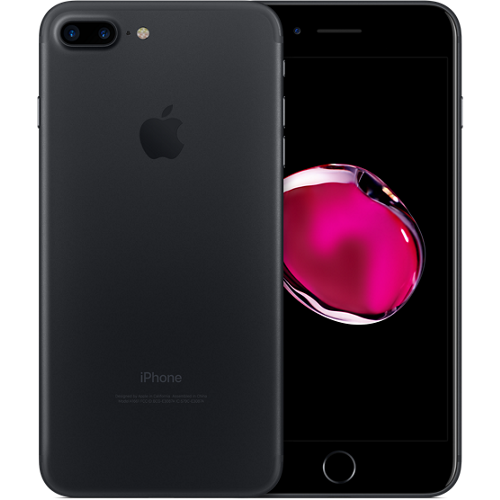
For the iPhone 7 Plus, what is written in the paragraph above, except for the camera, is again relevant. It is difficult to confuse it with the rest of the models ... if only because the iPhone 7 Plus has more than one. The iPhone 7 Plus is the first dual-camera iPhone ever designed for optical double zoom and bokeh. Like the iPhone 7, the iPhone 7 Plus comes immediately in 4 hardware models - A1661, A1784, A1785 and A1786.
In the spring of 2017, the iPhone 7 Plus also began to be released in the red color of the case.
Today, it's hard to imagine a digital industry without Apple products. It has a number of advantages: versatility, compactness, excellent specificationsperfect quality. The most universal among all apple devices is the iphone: in fact, it combines the functions of a phone, a tablet, and a player.
Giants of the digital industry are trying to compete with Apple in this category of products, which have been successfully holding the global market for electronic products for decades. Meanwhile, the story of Apple's take-off is very short: iphone production has less than ten years.
At the beginning
The very first iphone appeared in 2007: at the beginning of the year at MacWorld, in the summer - on sale. But the story of the famous Apple smartphone begins earlier. Back in 2002, Steve Jobs first voiced the idea of \u200b\u200bcreating a new universal device that combines the functions of a communicator, a mini-computer and a player. The story goes that Jobs originally intended to create a keyboard-free mini-computer that would allow him to type directly on the screen (that is, a tablet). But having familiarized himself with the functions of the future tablet that the developers provided, Jobs changed his mind and decided that from all this you can make a smartphone.
The next few years, the company worked on the iphone. The first version (Motorola ROKR) was unsuccessful. It was a phone with a player syncing with iTunes, with an interface similar to an ipod. The know-how had poor functionality and not too good design, users did not appreciate it.
At first, the history of iPhones was not going well. The company had trademark problems: the name iphone that it intended to use already belonged to another company, Cisco Systems. Following the premiere of the Apple iPhone in 2007, Cisco Systems sued Apple. As a result, the two companies agreed on sharing brand.
Before iOS
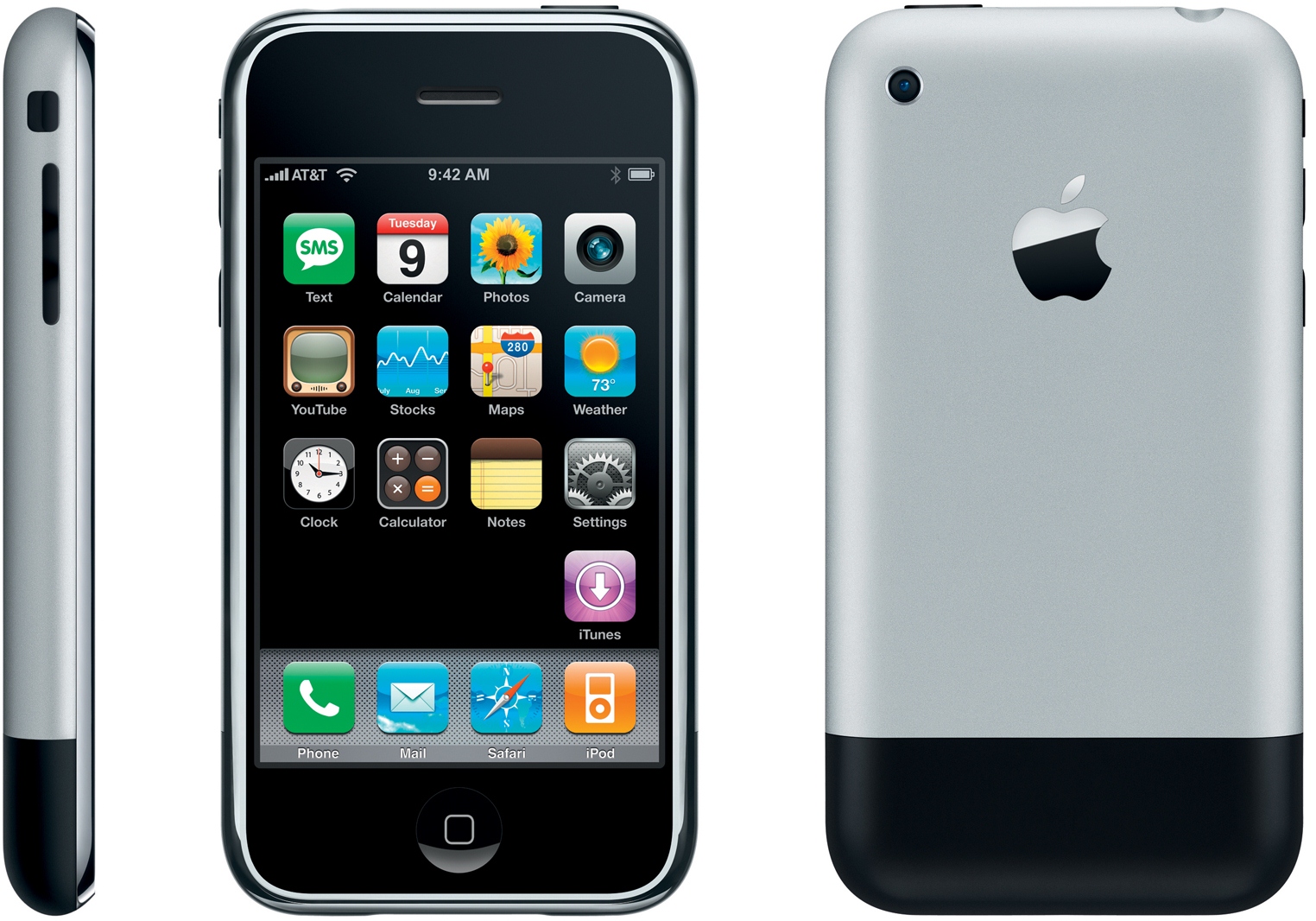 the 2007 iPhone combined all the basic promised functions: a player, a phone and a pocket PC. But he, too, was still far from perfect. The biggest disadvantage is low-speed Internet access (EDGE). 3G was not there then. The second drawback was the lack of security, so the corporate user was not interested in the new Apple.
the 2007 iPhone combined all the basic promised functions: a player, a phone and a pocket PC. But he, too, was still far from perfect. The biggest disadvantage is low-speed Internet access (EDGE). 3G was not there then. The second drawback was the lack of security, so the corporate user was not interested in the new Apple.
A year later, the company released the iPhone 3G. In addition to 3G, Apple now offered users GPS and A-GPS (with Google maps). A new operating system (OS 2.0) was installed on the device, the design was improved. The 3G model was produced with two sizes of internal memory, 8 and 16 GB. Over the year, the geography of sales of the new Apple device has expanded to seventy countries.
The next model, iPhone 3Gs, has been announced as high-speed. Indeed, the main differences between 3Gs and its predecessor are power and speed: a stronger processor, a larger battery, 32 GB of memory. The device also had new functions: data encryption, digital compass, voice control.
IOS Appearance
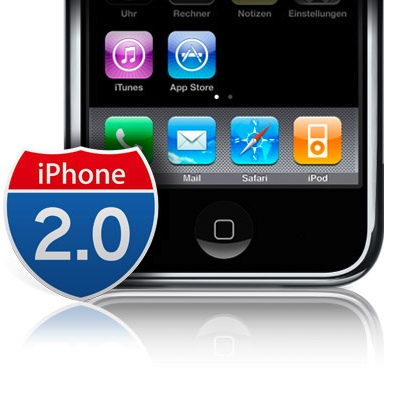 The history of Apple smartphones has entered a new round with the advent of the new iOS operating system.
The history of Apple smartphones has entered a new round with the advent of the new iOS operating system.
The fourth iPhone model did not contain the name G, because fourth-generation networks were not supported in it. IPhone appeared in 2010, OS 4.0 was renamed to iOS 4 during the announcement. The A4 processor was used in the model, the camera was improved, a gyroscope appeared, and a video communication camera appeared. The disadvantages that the four users complained about are the fragile body and poor signal reception. The last problem was completely resolved in new version operating system, iOS 4.0.1.
Steve Jobs died on October 5, 11th, the day after the presentation of the new iPhone model, 4s (“speed”: the prefix s in the names of apple iPhones appears when the emphasis in the new model is on improving speed compared to its predecessor). Jobs was not present at the presentation, Tim Cook announced a new product. The model was equipped with a dual-core A5 processor (clock frequency 1 GHz), the 5-pixel camera became 8-pixel, the Siri function appeared, GLONASS support. And the new version of iOS, fifth.
The history of apple smartphones continued in the fall of 2012: the iPhone 5 (actually the sixth generation) appeared. A6 processor (1.3 GHz), iOS 6 firmware, 1 GB RAM (predecessor 512 megabytes), support for fourth-generation LTE networks, Lightning dock connector. The screen has increased (4 inches against the former 3.5).
Finally, last fall, iPhone 5s and iOS 7 firmware appeared. A7 processor (64-bit architecture), M7 coprocessor, know-how: a fingerprint scanner built into the home button. The LTE range is expanded, the camera capabilities are expanded, the multi-shot mode has appeared. 5s has the most elegant design among all Apple smartphones (or maybe among all smartphones in general). It is carried out in silver-white, silver-black, golden color, miniature (weighs only 112 g). New opportunities for protecting personal data appeared and holes for jailbreaking (breaking software restrictions) supposedly disappeared. The latter is unreliable.
What is Apple Today
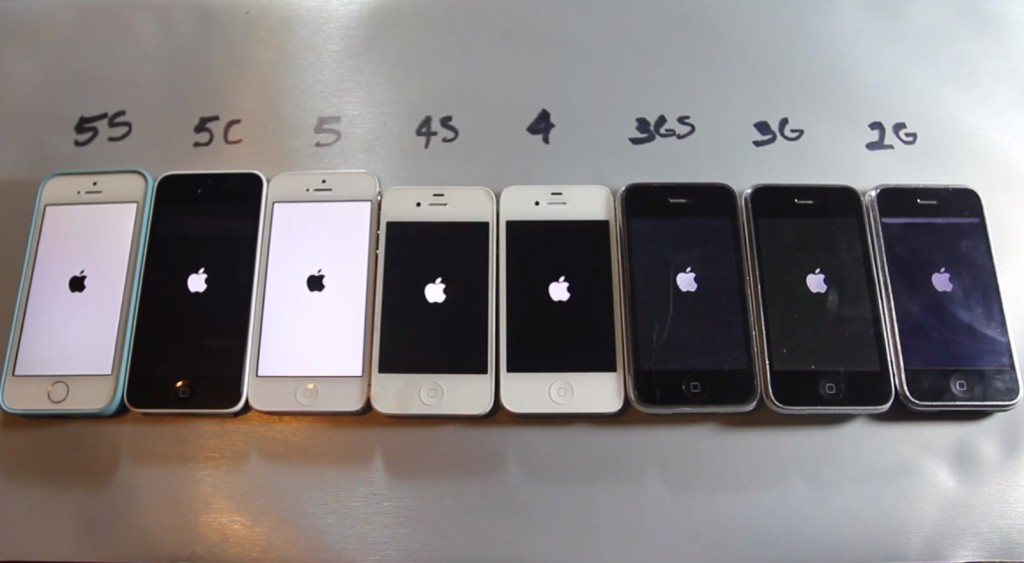 Today, smartphones, tablets and Apple players are sold in almost eighty countries around the world. An iPhone from an affordable device turned into an apparatus for wealthy people (already in 2011 the price in the Russian market reached 30 thousand rubles). Apple iPhones are faked at every step, fakes have turned into an independent industry.
Today, smartphones, tablets and Apple players are sold in almost eighty countries around the world. An iPhone from an affordable device turned into an apparatus for wealthy people (already in 2011 the price in the Russian market reached 30 thousand rubles). Apple iPhones are faked at every step, fakes have turned into an independent industry.
Smartphones are imperfect (almost every model has flaws). Often, users scolded Apple for being late for current trends. However, each new model comes out improved compared to its predecessors.
Kind words deserve additional apple services: the company produces millions software applications for their devices. Most of them are either free or inexpensive. So far, no other manufacturer has such a huge platform for downloading content.
The iPhone smartphone owes its appearance to the popular player from Apple - iPod, which since 2001 has gained tremendous success with users around the world. The director of the company, Steve Jobs, has long nurtured the idea of \u200b\u200bcreating a device that combines all the gadgets worn by people, and it became a multifunctional iPhone smartphone.
Initially, it was conceived in the form of a tablet, but after developing a touch screen and some other modules, a decision appeared to create a smartphone, therefore apple tablets became relevant only in 2010.
The prototype of the first iPhone was the Motorola ROKR mobile phone, which due to poor functionality and poor design in 2005 was called the "failure of the year." Taking into account the mistakes made, the company began creating a new smartphone in strict secrecy, which ultimately yielded amazing results.
first generation iPhone
The new smartphone was presented to the public in January 2007, and in the summer it began to be actively bought up by users. Despite the support of GSM networks, as well as the ability to use Wi-Fi and Bluetooth, he was sharply criticized due to the lack of 3G support, which forced users to use low-speed ADGE technology to access the Internet.

Moreover, in terms of communication security, it was noticeably inferior to some communicators, so it was not properly distributed in the corporate segment. In the first version, the model was equipped with 4 and 8 GB of internal memory, but after a while there was a model with 16 GB of memory.
Second Generation - iPhone 3G
After a year and a half in June 2008 apple completed the work on errors by understaffing the smartphone with the 3G module. The model was called iPhone 3G and along with support for 3G networks, it also supported GPS and A-GPS, if used google app Maps

The smartphone began to work under the operating system of the new version of iPhone OS 2.0, and was equipped with built-in memory of 8 or 16 GB. Compared with the first modification, the metal back cover has been replaced with a plastic panel in white or black. Within a few months after the iPhone 3G went on sale, its distribution area expanded to 70 countries (including Russia).
iPhone 3GS - the third generation smartphone
In June 2009, the third version of the device saw the light, which added the letter “S” to the previous name from the word “speed” - speed. So apple way announced the double speed of part of the applications (the most resource-intensive), which was made possible thanks to the new processor and the fresh iPhone OS 3.0 operating system.
By appearance It almost does not differ from its predecessor, the same dimensions are 115.2x62.1x12.3 mm and weight is 133 grams, but the new display cover immediately attracts attention. If the previous model had to be cleaned after each conversation, especially in the summer and not with an ordinary napkin, but only with a suede cloth, then the novelty is different. Now the display glass is protected from grease and can easily be cleaned with a paper towel or shirt sleeve.
In the third generation, developers paid serious attention to the possibility of adjusting playback when listening to audio files. To do this, the iPhone 3GS headset was equipped with a small control panel located directly on the connecting cable of the headphones. With its help, not only volume control is performed, but also the ability to rewind songs in both directions, stop and start them.

For the first time, a voice control function has been implemented, which successfully recognizes Russian speech when dialing a phone number, selecting a subscriber, and controlling an audio player. This opportunity available both with and without a headset.
Depending on the model, the smartphone was equipped with 16 or 32 GB of internal memory, which is more than enough to store many musical compositions and photos.
To increase the operating time in offline they equipped the phone with a new battery, but if you actively use the Internet, talk and listen to music for a long time, it is better to purchase a case with an additional battery. Especially to control the battery charge, Apple introduced a new option for its percentage display, which greatly simplified the life of most users.
For avid tourists and lovers of country walks, the device has an electronic compass with the ability to go to the map. In some difficult cases, a 3 megapixel camera can be involved, which not only helps in orientation, but also makes quite high-quality photographs and videos.
The fourth generation representative - iPhone 4
In the summer of 2010, Steve Jobs introduced the fourth generation of the smartphone - iPhone 4, which first began to work in CDMA networks. Almost immediately after that, Apple begins official sales of “unlocked” smartphones that can work with any operator. It was a bold and correct marketing move, which allowed to maximize sales of the iPhone 4.

What pleased the smartphone developers this time?
Of course, a Retina screen with an IPS matrix. Is the screen resolution raised to 960? 640 while maintaining a diagonal size of 3.5? - This is four times more than previous generations. I was also pleased with the dynamic contrast of the screen, which also improved 4 times and amounted to - 800: 1. Overall dimensions were left unchanged for ease of use with one hand.
The viewing angle of the display is simply amazing. Even at maximum rotation, the brightness of the picture only slightly decreases. Moreover, in the sun it does not “go blind” like most competitors, which is achieved through the use of a mirror substrate.
The front and rear panels of the case are made of aluminosilicate glass with an oleophobic coating that prevents fingerprints and makes it easy to remove greasy marks. Cases are presented in two colors - black and white.
The edging of the smartphone is made of steel and is divided into three sections that act as antennas: one for GPS, Wi-Fi and Bluetooth, the second for GSM and the third for UMTS.
The new 5-megapixel camera is made with the technology of "backlight" and is equipped with five-time digital zoom and autofocus. It allows you to record HD-video in 720p format and a frame rate of 30 frames / sec. A LED flash is conveniently located next to the camera.
As in previous models, the iPhone 4 uses a non-removable lithium-ion battery, which, according to the developers, ensures a longer battery life on a single charge. At the same time, the battery can be charged both from the mains power supply and from the computer, the difference is that in the latter case it will take a little longer.

The declared parameters look very optimistic: 7 hours of talk on the 3G network, 14 hours of talk on the 2G network and 300 hours of standby time. When using the Internet on a 3G network - 6 hours, and Wi-Fi - 10 hours. If you expect to watch movies for a long time, then the charge will last for 10 hours, you can listen to music for as long as 40 hours. That is, practically, with an average intensity of use, the charge should be enough for 2-2.5 days.
In this model, Apple applied new developments in the data protection system, which immediately attracted corporate customers.
iPhone 4S
The latest model of the 4 line - iPhone 4S was introduced in October 2011 and significantly pleased users with its innovations. This is the new dual-core Apple A5 processor (clock frequency - 1000 MHz), the updated iOS5 operating system and many other “goodies”, but first things first.
The smartphone case has not received any changes, except for a different arrangement of antennas, made in the form of a metal edging. In contrast to the previous model, there were four of them, two of which are reserved for GSM communications. This is done in the case when a signal is poorly received on one antenna. Automation will simply switch the phone to the second.
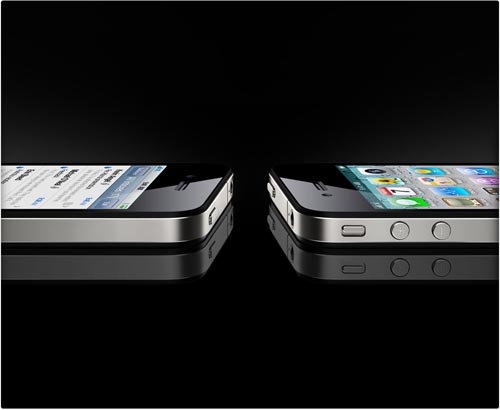
The latest model of the line - iPhone 4S was introduced in October 2011 and significantly pleased users with its innovations
The main camera has noticeably improved, which can now take photos with a resolution of 8 megapixels. In addition, at a speed of 30 frames / second, you can write HD-video in 1080p format. Activation of the camera is provided, both their phone menu, and from the lock state, which will allow you not to miss interesting frames. To stabilize the image during video recording, a gyroscope is built into the camera.
The iPhone 4S smartphone supports A-GPS and GLONASS, so Google’s mapping service has become more useful than ever. Displaying maps is possible in several forms, so you can position yourself on the ground, pave the optimal path to the chosen goal and choose the type of movement - transport or on foot.
iPhone 5
Just 6 months after the announcement of 4s, the line of the most famous smartphone brand in the world has replenished with the next model of a new generation. Fresh iPhone 5got an improved i6 processor, a new 4-inch display with a resolution of 1136 x 640 pixels and updated version iOS 6 operating system. Due to increased productivity, the device’s performance while viewing multimedia and surfing in the browser has doubled. The design of the flagship of 2012 has not undergone dramatic changes except for small parts and updating the back cover.
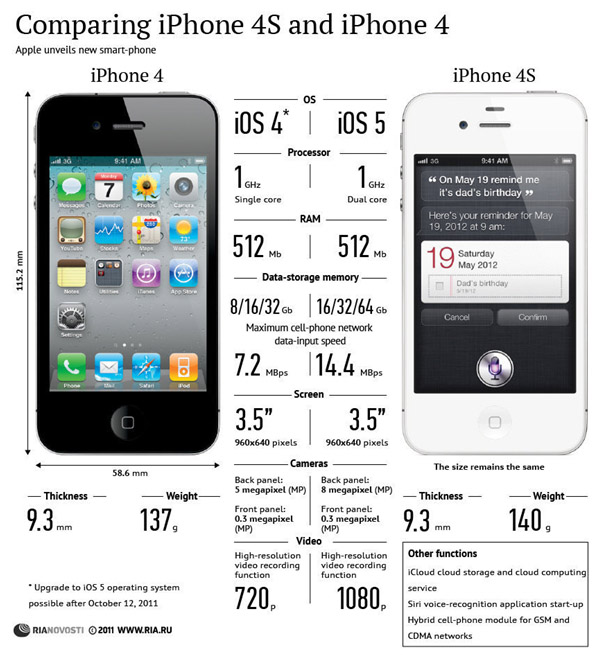
Conditional iPhone 5c
In case of iPhone 5c, Apple decided to move away from the standard scheme for the release of the flagship of the new series and its upgraded "S" version, diluting the line with a new class of device. Initially, the model was positioned as a budget version of the iPhone, but after the start of sales, the price was set at the level of iPhone 5. The novelty is made in a polycarbonate case and has five color variations. The plastic case of the smartphone has become a little thicker, and the weight has increased by 20 grams. Of the innovations in technical terms, there is an updated operating system with cosmetic improvements and a battery with increased capacity. The rest of the filling and specifications are completely similar to the iPhone fifth version.
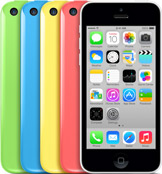
iPhone 5s
iPhone 5sis an extended version of the basic model of the line with the addition of unique functions and characteristics. The filling of the gadget has been significantly modernized, the quality of the case has been improved and two new colors have been added: 5s is available in golden, gray and default colors. On board the device is an Apple A7 processor and an upgraded camera that allows you to record video at a frequency of 120 frames / sec. at a resolution of 1280 × 720 and 30 frames / second - at 1920 × 1080. Fingerprint scanning technology "AppleID"also available only in the latest model of the fifth series.

iPhone 6 - the word for innovation and progress
September last year marked the start date of sales This time, the developers decided to move away from the usual format of compactness and ergonomics towards upgrading the technical part of the gadget. New iPhone received a 4.7-inch display with a new matrix in 326 PPI and a resolution of 1334x750 pixels. The heart of the device is the new dual-core A8 processor with a frequency of 1.6 GHz, 1 GB of RAM and a PowerVR-X6450 video adapter. The design caused heated discussions among supporters of the aesthetic component of the iPhone, which in the sixth model is clearly ruined by a camera sticking out of the case and plastic stripes in place of the built-in antennas.
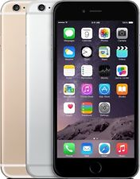
iPhone 6 Plus - the last word for Apple
iPhone 6 Plus- The first phablet in the legendary line of smartphones. Born Apple's desire to follow technological progress, keeping up with competitors. An interesting combination of former ergonomics, a large screen and high characteristics of iron. The model has an excellent display 5.5 inches by 1080 × 1920 pixels with a matrix of 401 PPI. An improved 8-megapixel camera is capable of recording video with a frequency of 240 frames / sec. Otherwise, the filling is similar to the sixth version. Design problems also migrated from the iPhone 6. Both models can be purchased in three volume options. hard drive - 16, 64 and 128 GB. For now iPhone evolution ends on this device, but judging by the activity of Yabloko, the appearance of another sensation is not far off.

On model 16 GB
Every year, Apple presents a new iPhone model, in which there are certainly a couple of interesting chips. Next year marks 10 years since the start of sales of the first iPhone. So we decided to remember how it was until today.
And at the same time we want find out from you: which of these iPhones was your first?
Go, ponostalgic.
1. iPhone (2007)

The first iPhone was innovative in itself. Discreet design, a minimum of elements on the case, a strict front panel.
Remember how smartphones looked before the iPhone: protruding antennas, joysticks, a bunch of buttons under the screen (sometimes even above it), styluses, a sliding qwerty keyboard and indecent thickness. Now look at the windows of any electronics store. Most devices are very similar to what Steve Jobs showed off on January 9, 2007.
The company showed what Apple smartphones will look like over the next few years, and subsequently followed the established principle.
What upset: Unfortunately, there are no minuses, the first generation iPhone did not receive a number of functions that its competitors had (3G support, video recording, multitasking, etc.), the operating system was closed to the user, there were many Apple restrictions (you can’t transfer pictures and music to other users, limited support for data formats, downloading files only through iTunes).
The headset jack too deep became a big file, which did not allow the use of many 3.5 mm headsets.
2. iPhone 3G (2008)
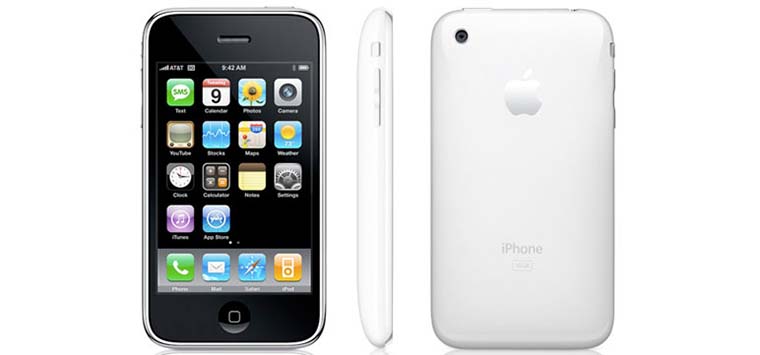
The smartphone has become overgrown with functions, primarily due to updating the mobile operating system. In iOS 2.0, we saw the App Store. Since that time, third-party developers have been able to earn money for us to release applications for the iPhone. Tim Cook reported more than 2 million applications in the store.
And with the release of iPhone 3G, we saw support for UMTS, HSDPA, A-GPS and different body colors (black and white).
What upset: plastic case and its low wear resistance. Within a few months, the back panel was covered with scratches, cracks appeared near the cable connector, and pieces were broken off during active use.
3. iPhone 3GS (2009)

In 2009, we first learned that Apple is not going to update the design every year. After that, on odd years, “eski” began to come out with last year’s design, but with new iron.
The model was remembered by the appearance of a camera with autofocus and the ability to shoot video. For the first time, the iPhone received a digital compass. Of the software innovations, multitasking and voice control (Voice Control) should be noted.
What upset: old design.
4. iPhone 4 (2010)
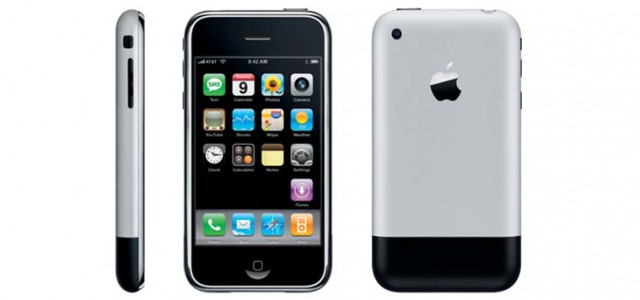
With this model, we learned about a screen with a high pixel density - Retina Display. After holding such a device in my hands for 5 minutes, I did not want to use the screens of the previous generation. Still, a pixel density of over 300 per inch is considered the standard. The technology began to be applied not only to the iPhone, it appeared on tablets and Apple computers.
Another device was remembered by the front camera, LED flash and gyroscope.
What upset: antennate has become a big file for Apple. With a certain grip, the iPhone 4 was losing its network and it was massive. Jobs and company had to apologize and hastily “invent” bumpers.
5. iPhone 4s (2011)
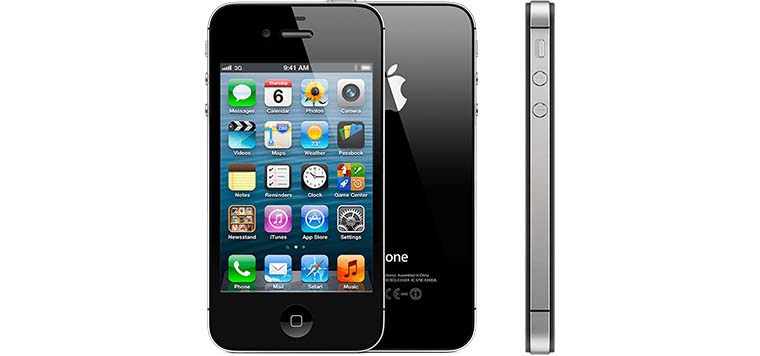
The main innovation of the last smartphone released under Jobs (Tim Cook led the event, and Steve passed away the day after the presentation) was Siri's voice assistant.
Then the chip seemed unsuitable for use. Later Siri learned a number of teams, learned several poems and jokes, even mastered the Russian language.
The iPhone itself was able to distribute the Internet via Wi-Fi, shoot Full-HD video, and broadcast the image via AirPlay. And the developers combined GSM and CDMA models in one device.
What upset: lack of support for the Russian language in Siri.
6. iPhone 5 (2012)
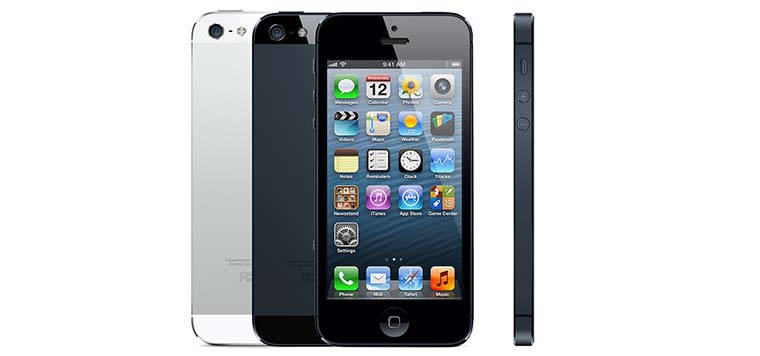
In 2012, we learned that Apple is able to produce a device with a screen diagonal of more than 3.5 inches. The 30-pin connector went into retirement, it was replaced by Lightning, which is with us to this day.
With this model, many first learned about the nano-Sim format (remember how you cut your cards with scissors?) And the EarPods headset.
What upset: strange paint on the back that quickly covered.
7. iPhone 5s (2013)

This device has a Touch ID fingerprint scanner. It’s hard to imagine how much time these sensors save us every day. Instead of entering a long password, just put your finger.
iPhone 5s was the first Apple smartphone to be released in gold.
The iPhone 5c model will not be considered. Apple went on an experiment that was no longer repeated, the device did not have innovations, but was only cheaper copy iPhone 5 in a colored plastic case.
What upset: A 64-bit processor and 32-bit applications, the App Store was not ready to launch a model with a new processor. While developers have not adapted programs and games, many 32-bit applications worked worse on the iPhone 5s than on the iPhone 5.
8. iPhone 6/6 Plus (2014)
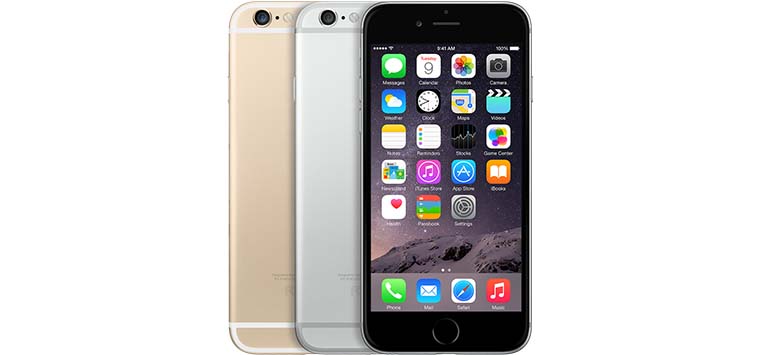
In 2014, we saw the first "shovels" from Apple. Two years later, they were already accustomed to such a size smartphone, but then it was too much.
Slim body, powerful filling, camera with Full HD shooting at 60 frames per second and optical stabilization (in the Plus model).
What upset: We have not forgotten the Apple ads with the ideal screen size for the smartphone. And for the first time we saw how the iPhone massively bend.
9. iPhone 6s / 6s Plus (2015)
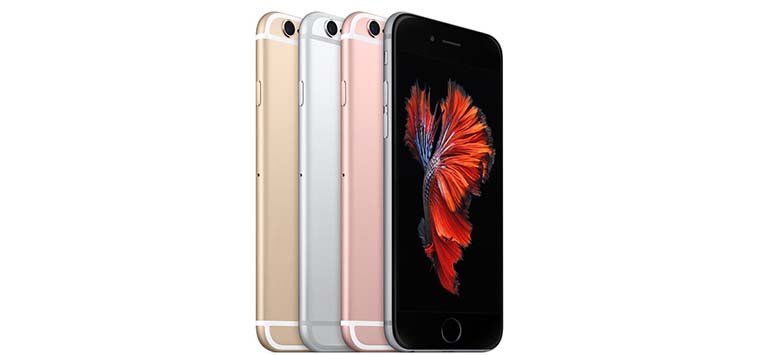
Last year’s new products include a touch-sensitive 3D Touch screen and software updates related to this technology. And there was a new color "pink gold".
What upset: too little innovation and software chips of dubious use ("live" photos, pop-up menus).
There was also a “tuned” iPhone 5S with a tricky name. "SE" (who forgot), but the model is hardly innovative. The device did not bring anything new to the line, although it became the most powerful 4-inch smartphone on the market.
10. iPhone 7/7 Plus (2016)
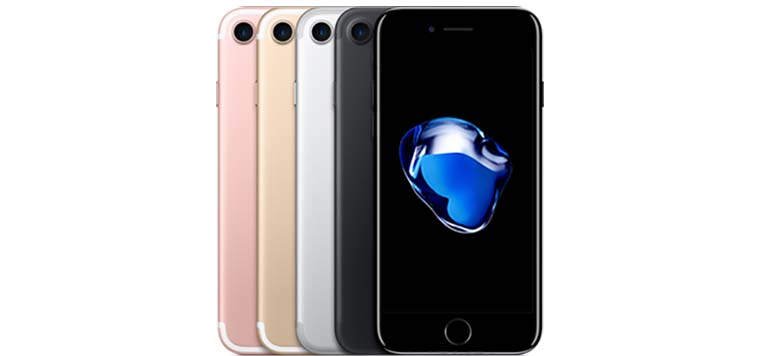
This year, the iPhone stopped being afraid of water, it became more reasonable to consume battery power and began to produce stereo sound. Quite a controversial decision was the rejection of the 3.5 mm jack. Now the headphones are only Bluetooth or Lightning.
And in the line of as many as 5 colors of the case, this has not happened since the days of the iPhone 5c.
What upset: almost unchanged design and scratched "black onyx", which is impossible to buy.
Now try to remember how you reacted to the innovations of each model during its appearance. No one ran head over heels for the iPhone only from the appearance of support for 3G or LTE, a front camera or flash, Siri or a large screen. At the time these chips appeared, they seemed unnecessary to many, and now we use them several times a day.
From year to year, everyone expects Apple's revolution, they require a holographic screen and teleport on the iPhone, and they themselves silently use the company's technology. None of the chips of previous smartphones has lost relevance for several years, they harmoniously fit into our use case.
The same will happen with the misunderstood 3D Touch, and with the moisture protection of the case, and with the lack of a 3.5 mm jack. Remember my words after a few years.
Stop thinking that fools are sitting in Apple, and that we know better what the iPhone should be. The smartphone should be exactly as it is. Whom this does not suit, welcome to the club.
P.S .: write in the comments which iPhone you started with. And with what they ended up with.
Want to know more? Cm.




